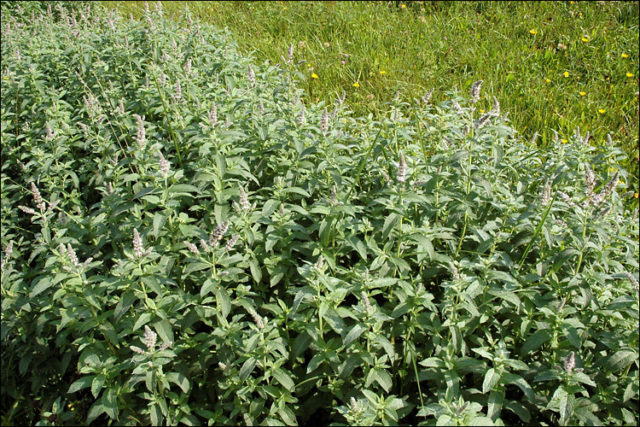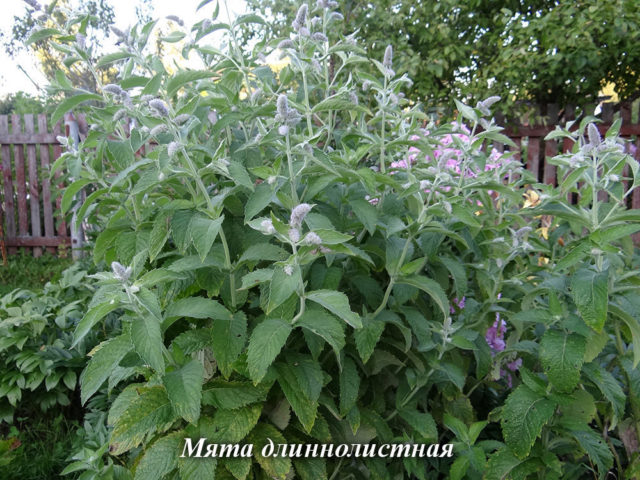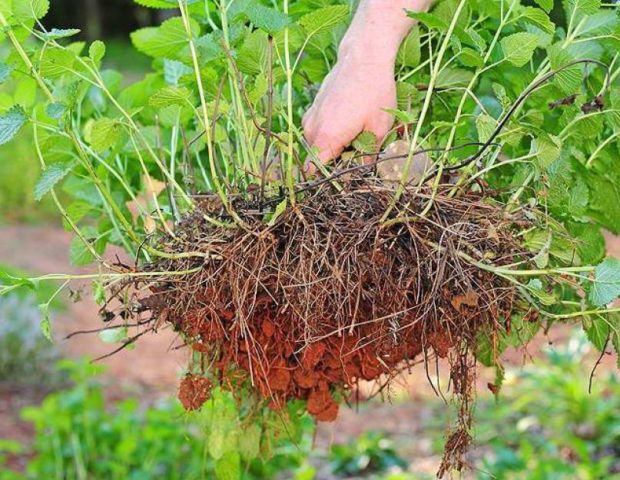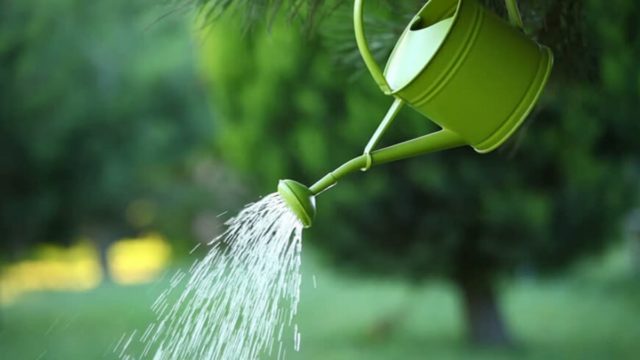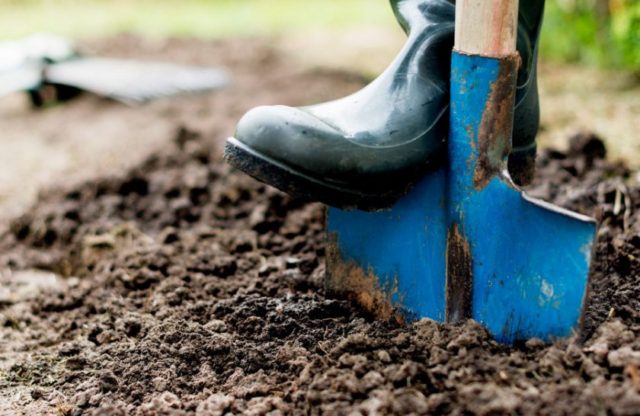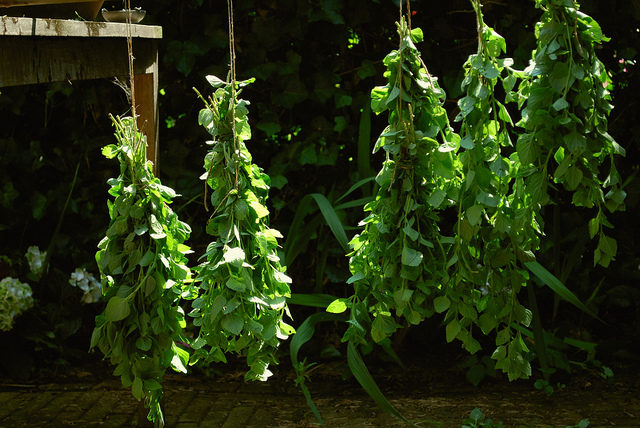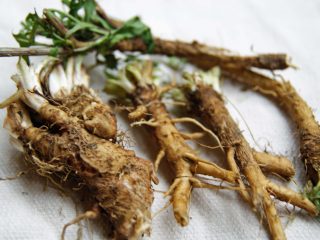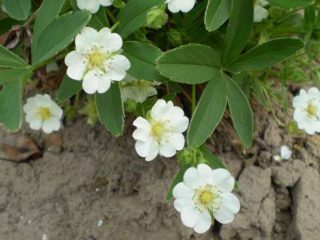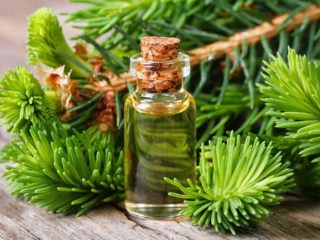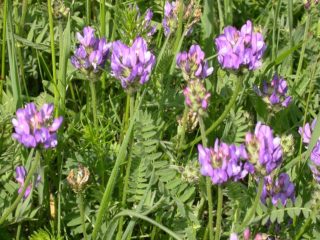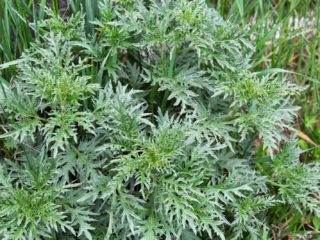Content
Longleaf mint belongs to the Lamiaceae family, which includes various herbs and plants. The leaves of the plant have a delicate aroma and a universal purpose. They are used in cooking to flavor dishes and drinks. Long leaf mint contains a high percentage of ascorbic acid.
Description of longleaf mint
Longleaf mint is a perennial herbaceous plant that produces strong, upright, branched stems. They are pubescent, tetrahedral with sharp edges. The plant reaches a height of 120 cm. The rhizome is creeping, located horizontally close to the soil surface.
The leaves are thickened, bluish-green in color, large oblong. The leaf blades grow from 5 to 15 cm in length and up to 3 cm in width. The leaf tip is pointed, the edges are unevenly serrated, and the petiole is short.From the photo and description of long-leaved mint, you can see that the foliage of the stems is good if agricultural practices are followed.
The flowers are small, numerous, collected in spike-shaped inflorescences, pubescent, of a pale purple hue. Flowering occurs in mid-summer earlier than in other species. Long leaf mint is a good honey plant.
Uses of long-leaf mint in cooking
Long leaf mint is used as a seasoning to add flavor to meat and fish dishes. Fruit and vegetable salads are prepared with fragrant leaves. In some cuisines around the world it is added when making pickled cheeses. Spicy herbs are used to flavor fruit drinks, compotes, and bread kvass. Also added when salting, fermenting and pickling vegetables.
What is the scent of long leaf mint?
Long-leaf mint has a pleasant menthol smell, which, unlike peppermint, is more delicate and subtle. The aroma is created by the essential oils contained in the plant. The leaves are most fragrant just before flowering.
Where can you add longleaf mint?
Tea is brewed with fresh and dried mint leaves, including using them as part of a mixture with other herbs. Soft and alcoholic drinks are also flavored. Mint is added to sauces and goes well with cabbage, carrots and legumes. Spicy herbs are added to confectionery, baked goods, and fruit sauces.
Beneficial properties of long leaf mint
Long leaf mint has a calming effect and relieves fatigue. Mint tea has a beneficial effect on the digestive system, eliminates bloating, destroys pathogenic microflora, and promotes weight loss.
Ice cubes with fragrant herbs are used to wipe the areas of inflammation on the skin of the face. This use also has a tonic effect and tightens pores.
In addition to its medicinal properties, longleaf mint also has contraindications, for example, it is not recommended for children, pregnant and lactating women. Also, consuming mint in large quantities has an adverse effect on men's health. Substances contained in mint can cause allergic reactions.
The use of long-leaf mint in folk medicine
Long-leaf mint contains fewer active ingredients compared to other species, but it is also used in folk medicine as a medicinal plant. The vitamin C content in the composition allows it to be used as an anti-inflammatory and antioxidant agent.
Externally, a paste of mint leaves is applied to the skin to treat fungal diseases, and is also taken with herbal herbs.
Mint infusion is used to rinse the mouth when abscesses or ulcers appear, and also relieve inflammation in the throat. The leaves neutralize bad breath. Tea with spice reduces cramps, eliminates nausea and reduces appetite. Has a choleretic effect.
Landing rules
The place to grow mint is chosen to be sunny but fairly humid. The soil must be fertile and loose. Heavy clay soils are not suitable for growing crops. On highly calcareous soil, plants become less fragrant. With a lack of moisture and light, leaves partially fall off.
The crop tolerates cultivation well in low-lying areas with little flooding.Mint is decorative during its long flowering period, so it is planted in flower beds and near ponds.
Longleaf mint is planted in early spring or late summer. The site is prepared in advance: the site is dug up deeply and weeds are removed. Thanks to its branched rhizome, the plant spreads quickly, so the growing area is limited by borders or pieces of iron and plastic are dug in around the perimeter of the ridge.
The culture is propagated by rhizome cuttings. In the summer, planting material is separated from young plants and pre-rooted in the sand, then transferred to a permanent place of cultivation. The plant is cut from old bushes and replanted in early spring or autumn.
The cuttings are planted in previously prepared grooves about 10 cm deep and covered with soil. When planting, plants are spaced 30 cm apart, leaving about 50 cm between rows.
Features of cultivation and care
Mint is moisture-loving; when growing it, the soil should not be allowed to dry out. In summer, in the absence of natural precipitation, daily watering is necessary. With sufficient soil moisture, the amount of leaf mass increases 2-3 times.
During the growing season, several loosening operations are carried out. Mint bushes do not resist weeds well, so they need to be weeded regularly. The crop is demanding on soil fertility. Plants are fed in early spring with complex fertilizer, as well as manure or compost.
Long-leaved mint is resistant to cold, but to protect it from severe frosts, the planting is covered with a layer of soil, manure or dry leaves.
Pests and diseases
Longleaf mint has many specific pests.Depending on weather conditions, some insects can cause serious damage to plants, including their complete destruction.
Longleaf mint pests:
- mint flea beetle;
- mint leaf beetle;
- mint mite;
- green shieldweed;
- aphid;
- meadow moth;
- slobbering pennice;
- caterpillars,
- bear
Insecticides are used to control pests. The preparations are used a month before collecting raw materials and eating fresh leaves. To prevent the appearance of soil pests, the soil is dug deeply before planting. Only healthy planting material is used for cultivation.
Long-leaved mint is most often susceptible to various fungal diseases, for example:
- rust;
- powdery mildew;
- wiltu;
- anthracnose;
- leaf spotting.
When fungal diseases appear, fungicides are used. Affected plants are removed and burned.
To prevent diseases and pests, longleaf mint is grown using crop rotation. It is recommended to leave plants in one place for no more than 2-3 years. The best predecessors for the crop: legumes, root crops. Plant resistance is increased by fertilizing.
When and How to Harvest Longleaf Mint
Mint with long leaves is collected in dry weather before or at the beginning of its flowering, this period occurs in the middle and second half of summer. At this time, the concentration of essential oils and other beneficial substances in the plant is highest. Raw materials from long-leaf mint are obtained from the first year of cultivation. With careful cutting, the bushes grow back well, which allows you to get a second harvest.
To harvest raw materials, cut off the tops of the youngest stems without signs of disease. The branches are cut to 1/3 of the total length.
How to properly dry longleaf mint
Mint dries quickly and well. After cutting, the plants are washed and tied into bunches according to the size of the stems. Then they are hung in a shady place outside for one day to drain the water. Subsequently, the raw materials are kept for 5-7 days in a dry and ventilated place, for example, in attics or under a canopy.
The dried leaves are separated from the stems and crushed to the required fraction. Store raw materials until the next season in glass jars with a lid or linen bags.
Conclusion
Longleaf mint is a spicy herb with a cooling menthol taste. The tall, branched stems produce many fragrant leaves that are ready for cutting from late June. Fresh and dried long-leaf mint is used as a seasoning and for making healthy tea.
